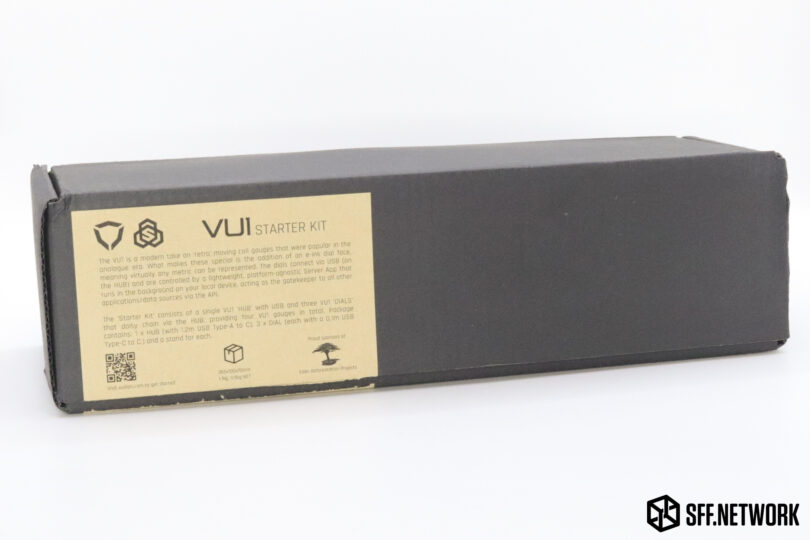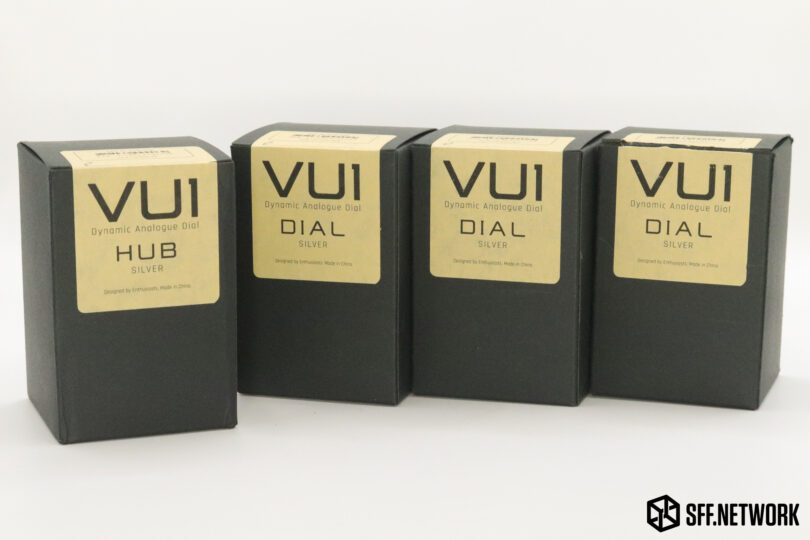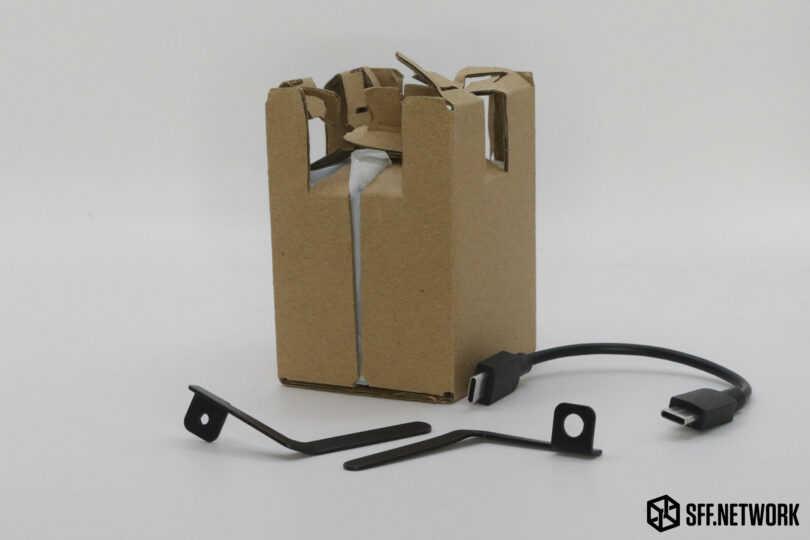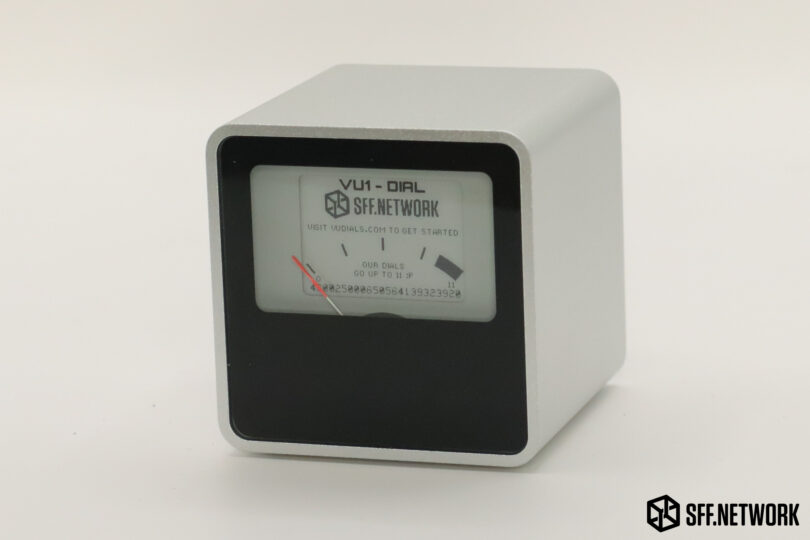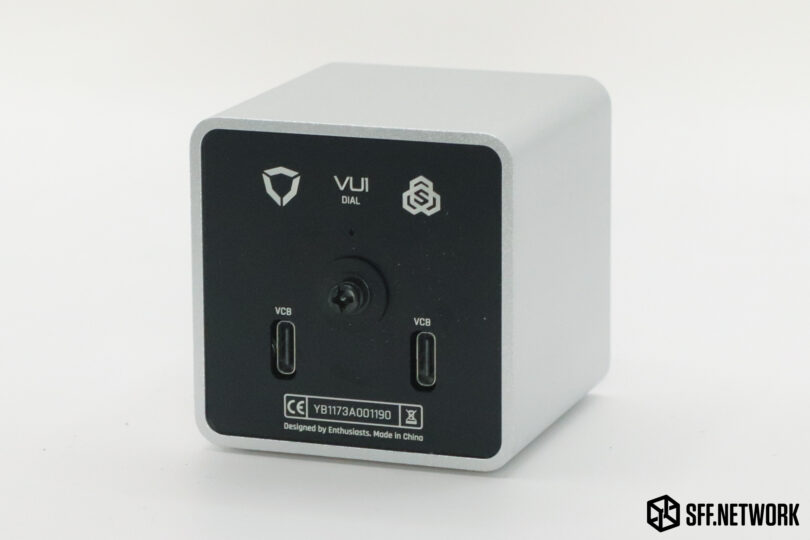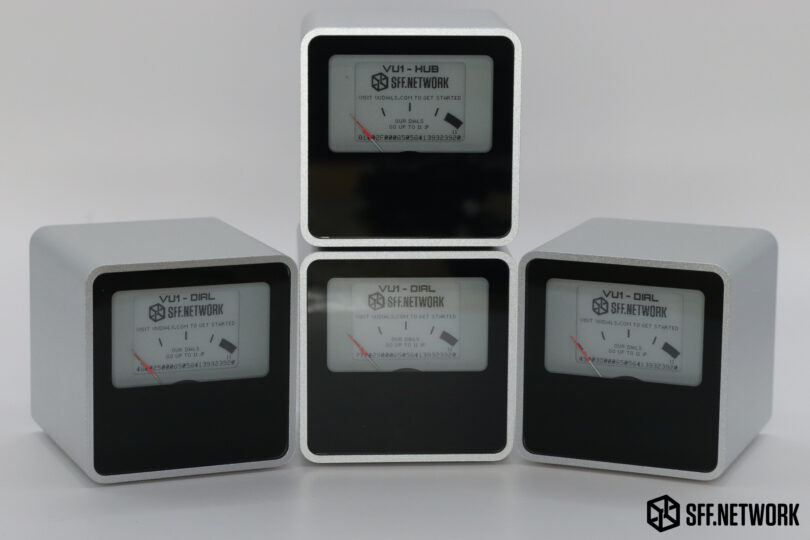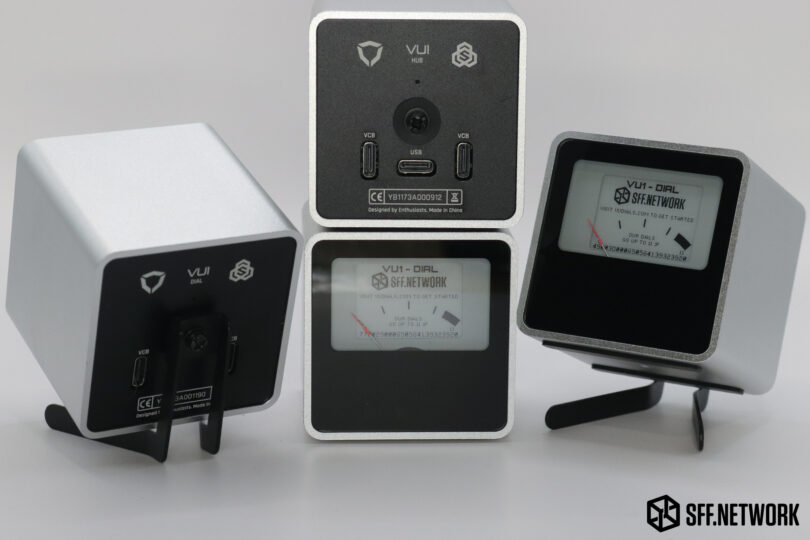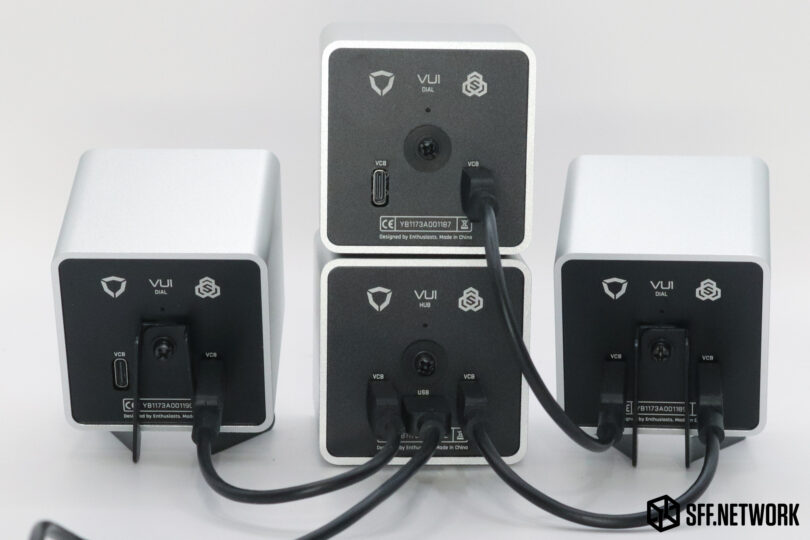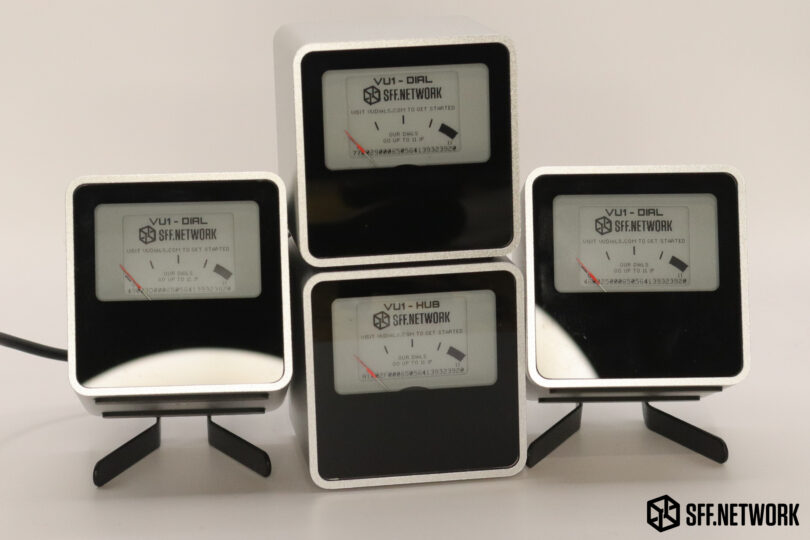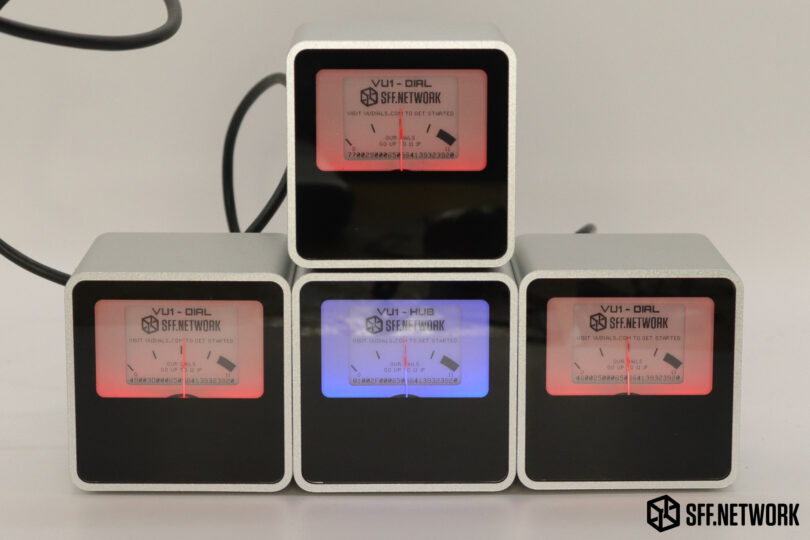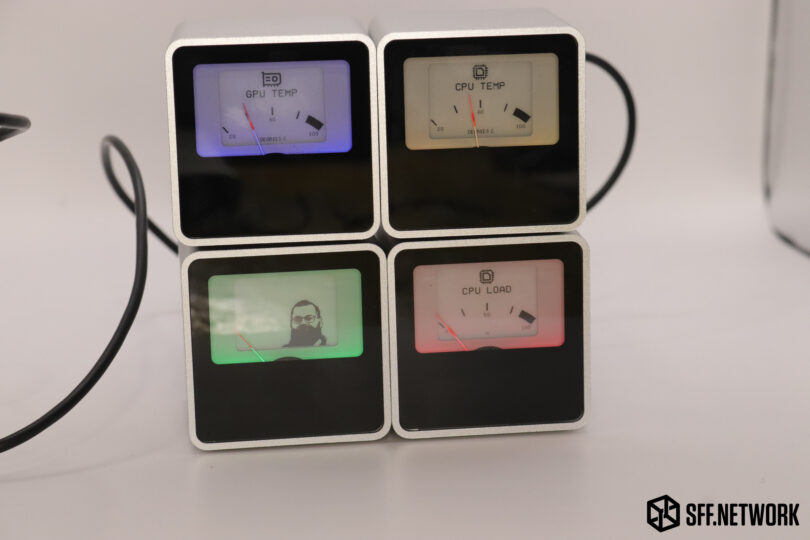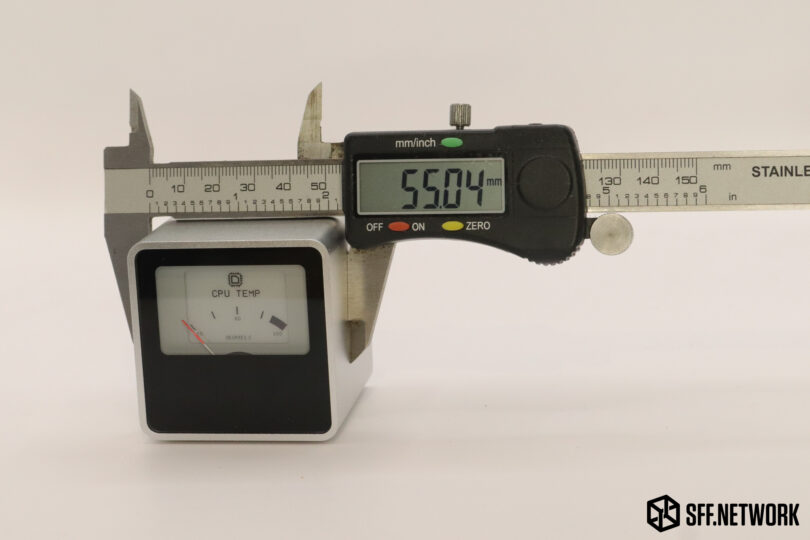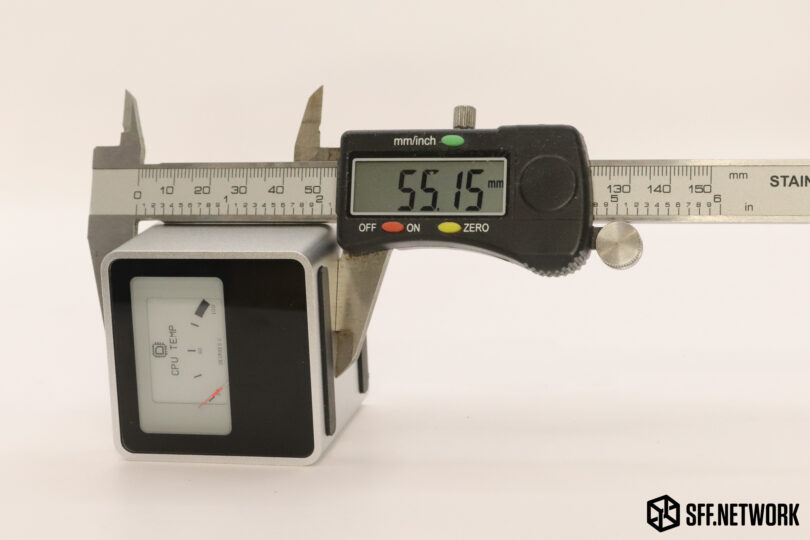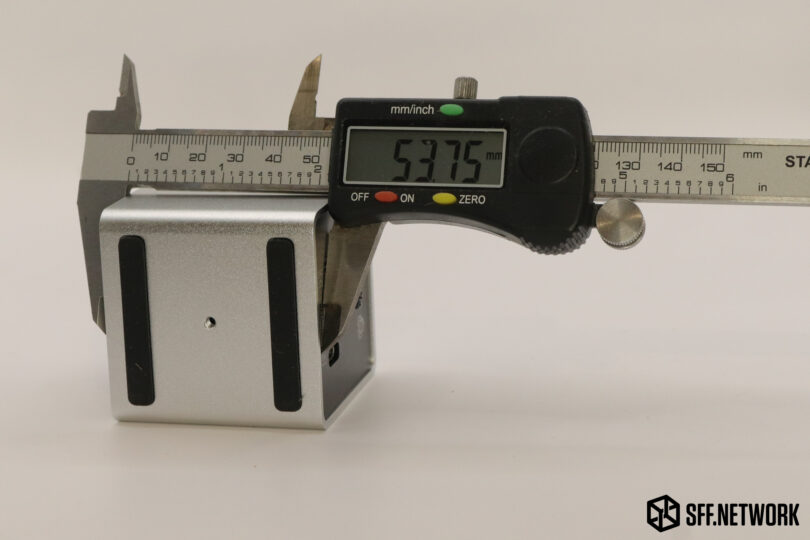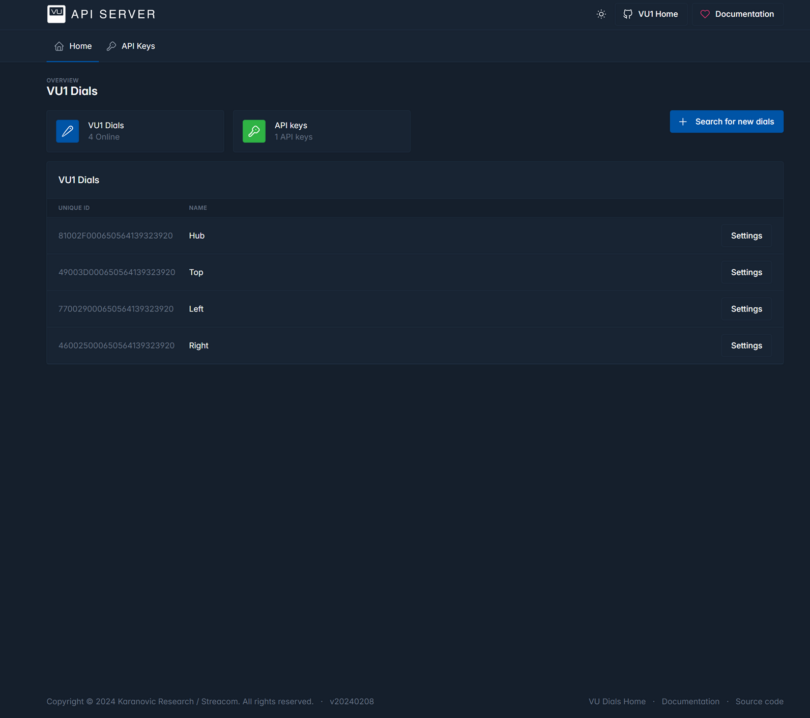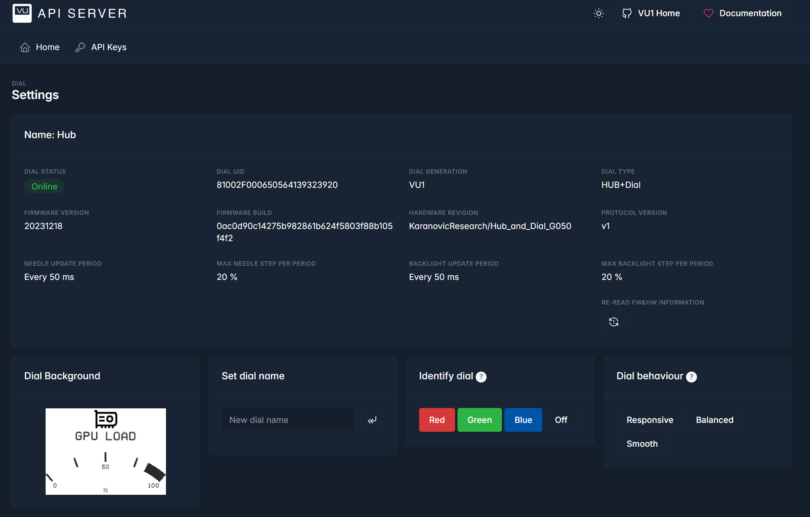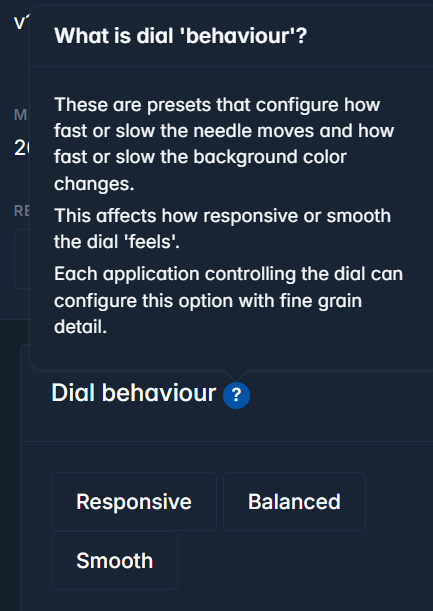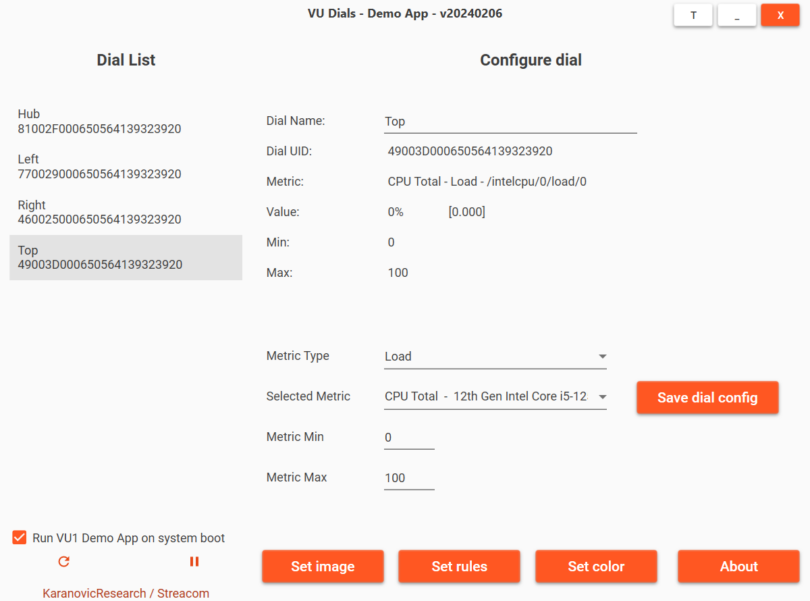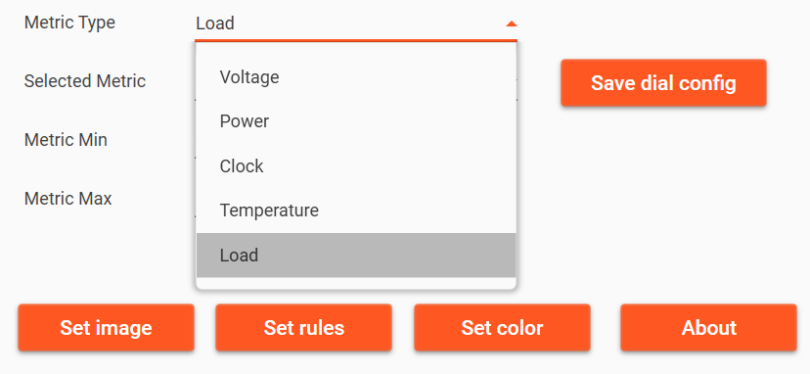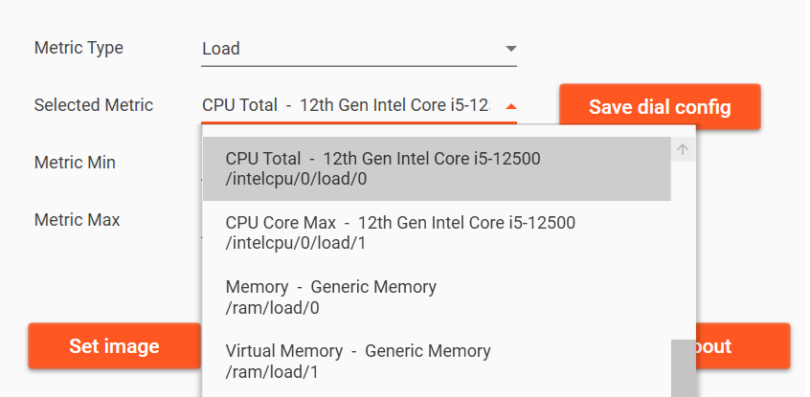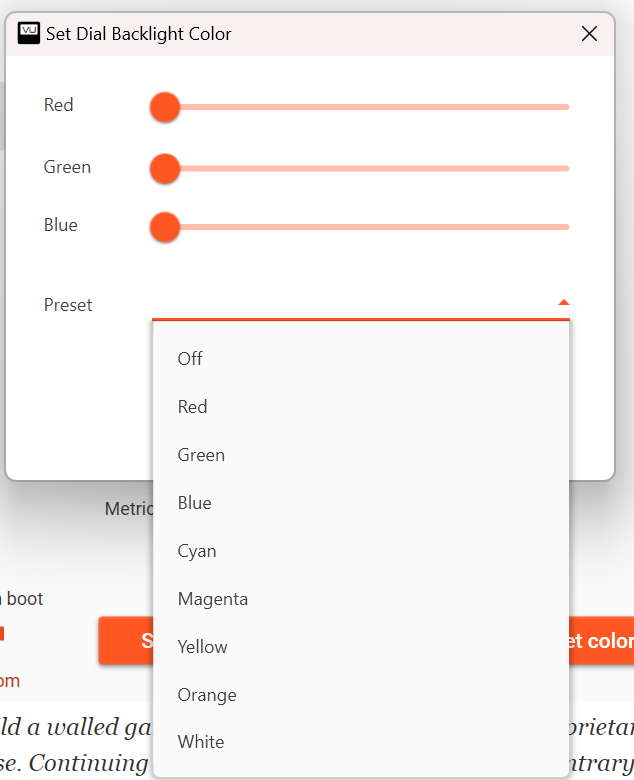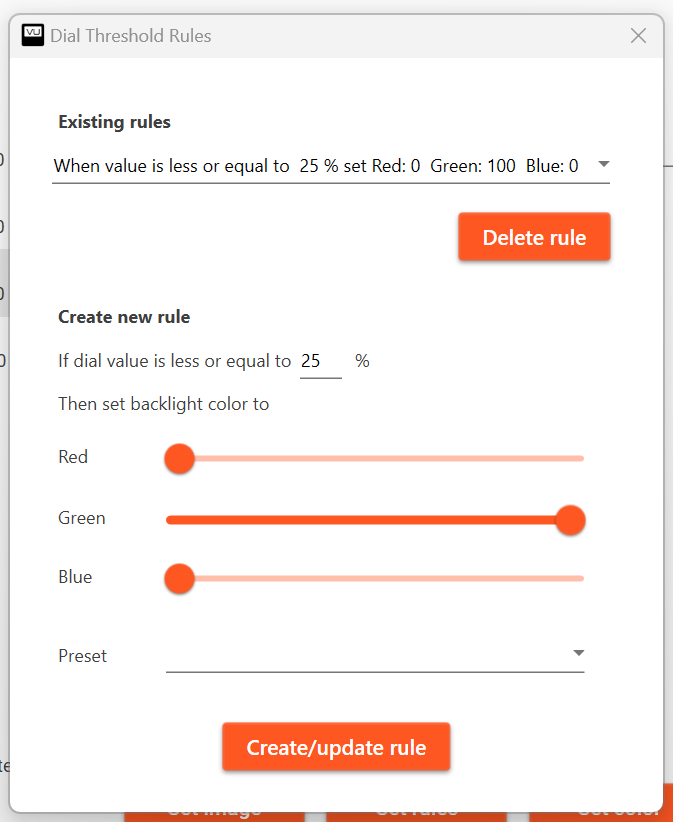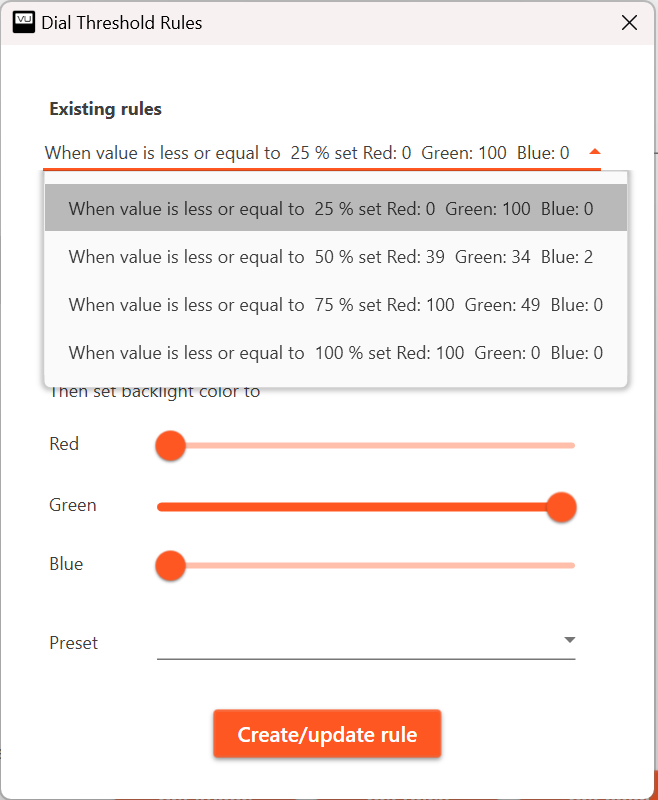Many thanks to Streacom for providing this review sample to SFF.Network for review.
Back in my day…
Way back when, the fanciest of home audio equipment, the venerable “tower of power” only found in your child-less uncle’s abode, had a bunch of fancy gauges, showing off the system’s left and right audio channel outputs – the VU meters, literally “Volume Unit” indicators. Through the rose (or amber) tinted glasses of nostalgia, some of us older folk want to look back to the “good old days”, where our gadgets showed they were working, not only by sound, but by moving needles upon an amber, or pale green, background.
Streacom has continued a project started by Saša Karanović, who modified a quartet of standard VU meters into resource meters for their PC. With the addition of an extruded aluminium housing (a forte of Streacom), RGB lighting (with intent), an E-Ink display and some manufacturing & logistics support, Streacom has taken the project to the next level – something marketable and approachable by enthusiasts.
At the time of writing, the kit, as reviewed, is selling for US$139.51 on Streacom’s online store:
The VU1 Starter Kit
The VU1 Starter Kit comes in a cardboard box – no plastic! The box is slightly squished, a remnant of the damage the shipping box received – going by the grease remnants, it made friends with the working end of a forklift somewhere in transit.
An explanation – the VU1 product is available in four forms on Streacom’s web shop. The starter kit includes one hub and 3 dials. The hub is critical to the system working. It forms the… hub… for your PC to connect to, and can pass on data to downstream dials. Note that the hub is also a dial, just a smarter one!
At time of writing, the four forms are priced at;
| Option | Price |
| Starter Kit (1 hub, 3 additional dials) | US$140.08 |
| Expansion Kit (4 additional dials) | US$134.70 |
| Hub | US$45.26 |
| Dial | US$40.95 |
One hub, 3 dials. All in cardboard packaging. One dial came opened in my set, likely for QC reasons prior to shipping to a reviewer!
This is the opened one. Even though it’s been opened, it’s still well protected and arrived in mint condition. The only plastic packaging present is a soft plastic bag around the dial (or hub) itself – which should be easily recyclable in most areas. Also included in each dial box is a shorty USB type-C to type-C cable, and a pair of legs that form a stand.
Streacom showing off by adding our logo to the review samples! Being E-Ink, the display will stay on the last loaded image for practically forever. The VU1 dials are encased in an extruded aluminium housing, with a glossy plastic front fascia, and (what feels like) an anodised aluminium panel at the rear. The VU1 range is available in a silver, and a black, housing – with no price difference. I personally prefer the silver – it feels more… period correct.
The VU meter itself is dipped in a bright orange coating, great for visibility.
One thing to note, and an important part of why Streacom added RGB LEDs, is that the E-Ink display isn’t backlit, and can’t be viewed in the dark.
An aside – the long number at the bottom of the display isn’t some ARG (Alternate Reality Game) hint or passcode, it’s just the unit’s ID number.
At the rear of the dial, we see a pair of USB Type-C ports. One is an input, one is an output for downstream daisy-chained dials. Which one you use for each is up to you! Also visible is a screw mount for the stand legs, and some clean screenprinting.
The quartet of the starter kit. Somehow, Streacom got our logo onto all four VU1s, even the ones in factory sealed boxes! Magic.
From the front, we can see that the hub unit appears identical.
From the back, however, we can see that the hub unit has an extra USB port – the upstream USB port that connects to your PC.
With stands attached, the VU1 dials point upwards, ideal for sitting on your desk, in frong of your keyboard. The fitting of the two legs is a little fiddly, but definitely doable for most folks. Those who may have fine motor control issues (like my left hand) may find it difficult, however. My recommendation is to insert the screw through the legs first, and then mount the two legs as one to the dial.
Wiring up the VU1s is simple, with the hub forming a… again… a hub… for the dial set. Also, no, I haven’t seen what happens if you form a complete loop of cables… hmm.
Let’s see how they look powered up!
Powering the dials up for the first time is something that should be done following a certain procedure. Both my laptop and desktop refused to process each dial as an individual unit until I followed the following (information is provided by Streacom on the VUDials website);
- Download and install the VU1 Server software
- Plug in the hub, and only the hub
- Start the VU1 Server software
- Go to http://localhost:5340/
- Click “+ Search for new dials”
- Ensure the hub is seen
- Plug in a dial,
- Click “+ Search for new dials”
And so forth, until all dials are detected.
And there we go, four individually detected VU1s. A few standard dial backgrounds can be downloaded from Streacom’s VUDial website, but you can add your own as you please – all it has to be is a 200×144 pixel image. You do get better results if you convert to a dithered 1 bit image format prior to loading it to the dial, however, the dial will attempt to convert colour images.
Out come the calipers! ~55mm wide,
~55mm tall,
…and ~54mm tall. 163mls… sorry.. 0.163 Litres. Smol!
The Software
Streacom’s VU1 requires the use of “server” software, running on the host PC and accessed via a web portal. This “server” gives access to base configuration, and also serves as a portal for the API to access the hub & dials.
Dark mode enabled, of course. Here, I’ve already “adopted” all the dials and the hub in the set – I ran through this procedure earlier in the article. I’ve also named them, which is super helpful when configuring them in both this web console and in any software you use.
And of course, API keys are available through the web portal. Note – each piece of software you use to control one or more dials will need it’s own API key – easily sorted here though.
Clicking on settings for a dial (or hub) takes you to the config page for that unit. Some base information is shown, and a couple of settings. The “identify dial” feature is handy, as all the dials look alike IRL! Also configurable is the “Dial Behaviour”.
“Responsive” results in super quick reactions of the dial to data, but can lead to the dial moving too fast and reading too high (or low) briefly. “Smooth” is the opposite end of the spectrum, where the dial needle’s movement is quite smoothed out and may be quite delayed. “Balanced” is somewhere in the middle. As an example, the following short video shows each dial showing the same data, but the bottom three are set with “Responsive”, “Balanced” and “Smoothed” from left to right.
With the server out of the way, let’s look at Streacom’s “Demo” app.
No dark mode… Ah well. This is a “demo” app after all.
Changing the display is pretty straightforward in the “Demo” app. Why is it called a “demo” app?
Calling it a demo app was a decision based on our long-term vision for the VU1. Rather than build a walled garden, forcing customers to use our proprietary application, we wanted the VU1 to be open to everyone. This would allow the VU1 to be used in scenarios far beyond our limited imagination and, more importantly, be utilised by ANY other apps or purpose. Continuing to develop the demo app would run contrary to that vision and we see it is as a stop-gap solution until 3rd party apps incorporate native support. In the near future, we expect that as VU1 adoption grows, the demo app will become redundant. – Streacom
The “demo” app includes support for component voltage, power consumption, clock speed, temperature and load metrics. Alas, no audio.
The list of metrics to select, per category, is pretty sizeable, depending on your system’s sensors.
Colour selection is easy, with a few presets, as well as RGB sliders. A note – this is RGB, not RGBW, so white is a little blueish.
Rules can also be set to change the colour depending on the metric. This does seem a bit backwards, in that you set colours from the top of the scale and work down, not the other way around.
These settings, as an example, result in;
Setting the e-ink display’s image is pretty easy – just click the button and pick an image. Streacom does supply some stock gauge backgrounds, however, any image can be picked. Well, sort of. Anything outside of the 200×144 pixel display size results in weird results, and anything colour relies on the display’s conversion to black and white. (No grayscale here.) Pixel artists rejoice, though, as it’s pretty easy to create your own designs. I’ve played with a few, but my pixel skills are abysmal!
One note though, animations aren’t possible. Being e-ink, the displays are slow to refresh, and require blanking as part of the image change.
The demo app, is, however, somewhat laggy. Simple actions can sometimes stall the app for a few seconds, which also stalls the dial motion, until wakes up again and continues. Keep in mind that I’m running this demo on an i5-12500 with 64GB RAM and an RTX3060ti and still experience this behaviour. When not configuring things, the app seems to mostly behave, although I have experienced a few crashes (and one of the server software).
Conclusion
The concept? Brilliant. VU dials are glorious, and the addition of the e-ink display is a fantastic idea. Simple, sleek aesthetics add to these factors, meaning that these little displays are a winner of an idea.
The execution? Not so fantastic. Whilst the build quality is immaculate, the limited software functionality and performance at launch is somewhat of a tarnish on what could have been a SFF Network Recommended product. Whilst we do understand that the product is aimed at enthusiasts, who aren’t afraid to get their hands dirty in aftermarket code, it seems a little… unfinished.
The market life of this product really depends on one of two factors – whether the community comes to the party and releases code to add functionality and improve performance, or if you’re happy with the stock functionality and somewhat laggy implementation of the “Demo” app.
As shipped, though, the VU1 product is still something we approve of, as it adds some schmick style to any desk setup, and has some useful functionality to boot. Outputting basic load, temperature, power consumption data is still an awesome base feature set, and I’m sure the community will develop a load more options.
We’ll be sending this kit to our fantastic SFF.N Dev to play with, so look forward to a part two in a month or two where custom use cases will abound! For those who want to mess with the server code, there’s a Github Repo available here: https://github.com/SasaKaranovic/VU-Server and the Demo app here: https://github.com/SasaKaranovic/VU-Demo-App
Small Form Factor Network is determined to help support and grow the SFF community by creating a great place for designers and users to work on their SFF projects. It’s currently owned and operated by passionate and dedicated volunteers, and often at a loss of time and money. Please consider showing your support by visiting our merch store, becoming a subscribing member, or even just telling a friend about us. Thank you for your support!

